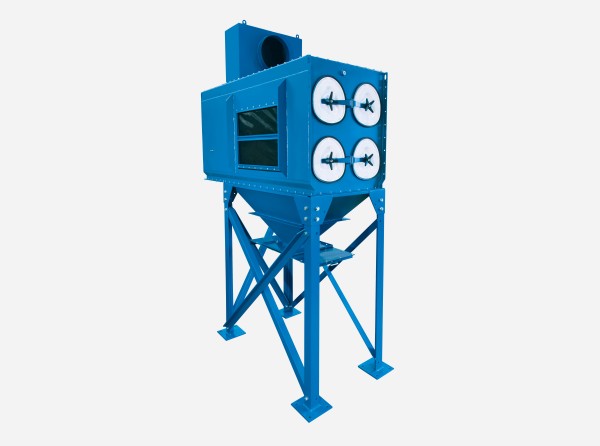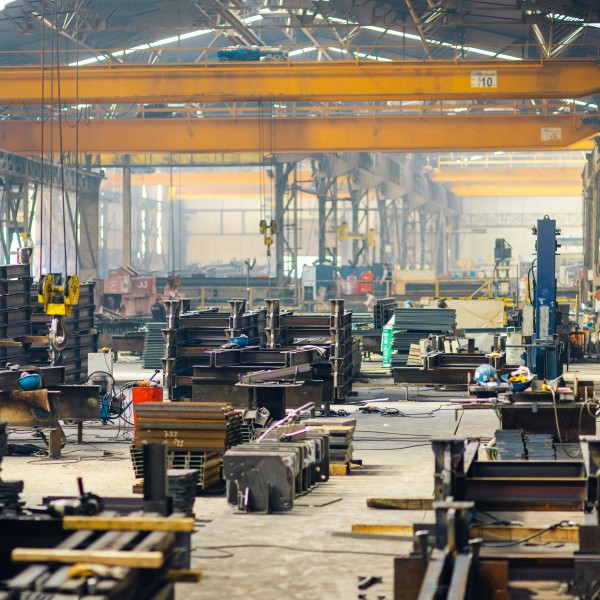All forms of welding create fumes that pose exposure hazards. You can greatly reduce exposure levels by properly ventilating the workspace. Don’t assume that using a fan, opening a window, or even welding outside will adequately protect your welders. It is preferred to use LEV (Local Exhaust Ventilation) solutions over natural ventilation for their ability to capture fumes near the source, before contaminants are dispersed throughout the facility.
While each welding facility is unique, the following questions will help you select the most appropriate fume extraction system for your operation.

What are my dust and fume hazards?
First, you need to understand the combustion risks present in your operation by analyzing your materials and process. You’ll find guidance for this analysis in ATEX 2014/34/EU Guidelines. This directive pertains to devices and protective systems designed for operation in environments with the potential for explosions. Once you identify your hazards, you can develop a fume extraction strategy specifically for your facility.

How much weld fume does your facility generate?
Next, you need to determine the duty cycle of your operation and the volume of particulates your fume extractor will need to handle. Do you operate 24/7 or weld for eight straight hours during a normal workday? If so, you will likely produce a higher level of weld fume particulate and want to consider fume extractors that run continuously, have self-cleaning mechanisms, and also have long-lasting filters to minimize downtime. Robotic welding will also produce a large amount of weld fumes with the same requirements.
On the other hand, if you do mostly manual welding and use the weld stations only on an intermittent basis, the ideal option may be a small mobile fume extractor. This equipment can be turned on and off depending on demand. The key is to equip your facility with long lasting filters to maintain optimal ventilation performance and minimize operative downtime.

What method of extraction will work best?
Identify where welding fumes are generated and what your facility lay-out allows in terms of equipment location. It’s always preferable to remove fumes close to the source of generation. Source fume extraction means each weld station has its own collection hood, extraction arm, or a workbench to capture fumes specifically generated by that operation.
There may be layout considerations that limit the use of source collection, however. If there are overhead cranes, limited floor space, or no room for ductwork, these factors may dictate general ventilation method. In this method, no capture equipment is used at the weld station; rather, an ambient collector draws in fumes from the entire workspace.
Another factor to consider is whether you frequently rearrange your facility layout. General ventilation may not need to be reconfigured when you change your layout, while source extraction needs to move with the welding equipment.

Where should equipment be located?
If you select source collection, you then need to decide where to locate the equipment in relation to the weld stations. Facilities with spread out workstations find it convenient to use a point-of-use layout where one collector is connected to one welding operation or station. Since each welding point has its own extractor, it’s smart to select an extractor with a small footprint that can be placed directly adjacent or close to each workstation.
In other shops, it might work best to use a centralized strategy. In these installations, one collector serves multiple workstations, and the stations are connected to the extractor through a network of ducts. In these layouts, the centralized collector is typically located some distance away from the welding points and maybe a good option if floor space is limited near the welding.
What type of filtration equipment is most appropriate?
Once you’ve determined your weld process, facility limitations, and extraction goals, you’re ready to select the extractor itself. This equipment draws in contaminated air, filters out particulates, and exhausts filtered air outdoors or possibly back indoors. Particles that settle out in the extractor are collected in waste containers.
Donaldson Downflo® collectors come in a wide variety of designs and sizes. Their pleated filters are easy to change and provide maximum particle-holding capacity in a compact footprint.

Donaldson fume collectors come with a self-cleaning function where compressed air pulses the filters clean during operation, extending the life of the filter. This function requires a compressed air source.
When it comes to filters, it’s best to use one designed for sub-micron weld fumes, such as Donaldson’s Ultra-Web® fine fiber filters. The media traps dust on the surface, creating a dust cake that pulses off easily, which extends filter life.
Other Best Practices
Two other recommendations will help you select the ideal fume extraction system for your application:
- Involve your welders in system design. Capture devices such as extraction arms should be maneuverable and long enough for workers to adjust as they move around parts. Getting their input upfront will help develop a system that they will be more inclined to use.
- Ask a fume extraction professional for assistance. With many variables in the mix, it pays to work with someone knowledgeable who can help analyze your operation and help design the ideal solution. Your Donaldson representative can navigate you through the process.
Related Articles
Resources






